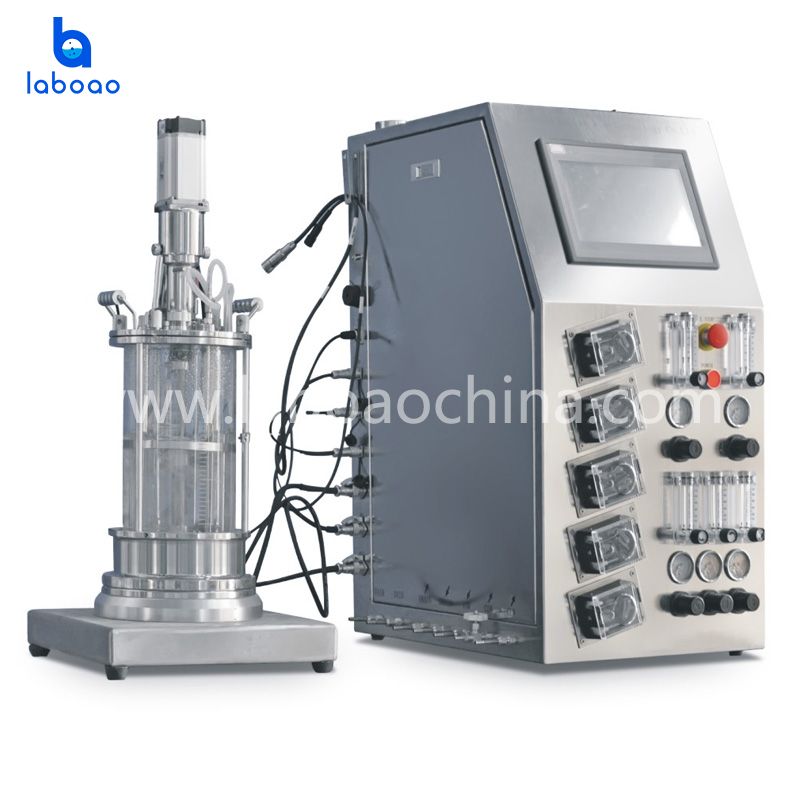Do You Know The Classification And Structure Of Mammalian Cell Bioreactors?
1. Stirred bioreactor
Stirred bioreactors rely on stirring paddles to provide the power to stir the liquid phase. It has a large operating range, good mixing and concentration uniformity, so it is widely used in biological reactions.
However, because animal cells are not protected by cell walls, they are very sensitive to shearing, and direct mechanical stirring can easily damage them. The traditional stirred bioreactor for microorganisms is obviously not suitable for the cultivation of animal cells.
Therefore, the agitated bioreactors in animal cell culture have been improved, including improving the way of oxygen supply, the form of stirring paddles, and the addition of accessories in the reactor.
(1) Improvement of the way of oxygen supply
In general, stirred bioreactors are often accompanied by bubbling to provide the oxygen required for cell growth. Since animal cells are also sensitive to the shear of bubbling, much work has been done on improving the way oxygen is supplied.
Cage oxygen supply is one of the oxygen supply methods of agitated animal cell bioreactors, that is, the bubbles are separated by a wire mesh and do not directly contact the cells. This ensures mixing with as little shear as possible to meet cell growth requirements.
(2) Improvement of stirring paddle
The form of the stirring paddle has a great influence on cell growth. The improvement in this regard mainly considers how to reduce the shear force on cells. Some people have improved the form of the stirring paddle and added accessories in the reactor. Experiments show that the improved bioreactor is suitable for high-density culture of shear-sensitive cells. The bioreactor uses a double helix ribbon stirring paddle with 3 surface baffles mounted on the top flange cover. The included angle of each baffle plate relative to the radial direction is 30°, and it is vertically inserted into the liquid surface. The presence of baffles reduces vortices on the liquid surface. Such a bioreactor maintains a small shear force, and in the culture experiment for insect cells, the final culture density reaches 6 × 106 cells/mL, and the survival rate is over 98%.
2. Non-stirred bioreactor
The biggest disadvantage of the stirred bioreactor for animal cell culture is that the shear force is large and the cells are easily damaged. Although various improvements have been made, this problem is still difficult to avoid. In contrast, non-stirred reactors generate less shear force and show strong advantages in animal cell culture.
(1) The packed bed bioreactor is a filler of a certain material in the reactor for cells to grow adherently. The nutrient solution is provided by circulating perfusion and can be continuously replenished during the cycle. The oxygen required for cell growth can also be carried by the circulating nutrient solution outside the reactor, so that no air bubbles will damage the cells. This type of bioreactor has low shear force and is suitable for high-density cell growth.
(2) Hollow fiber bioreactors are widely used in the culture of animal cells due to their small shear force. This type of reactor consists of hollow fiber tubes, each of which has an inner diameter of about 200 μm and a wall thickness of 50 to 70 μm. The tube wall is a porous membrane. Small molecules such as O2 and CO2 can diffuse through the membrane freely. Animal cells are attached to the outer wall of the hollow fiber tube to grow, which can easily obtain oxygen.
(3) Airlift bioreactor is also one of the commonly used equipments to realize high-density culture of animal cells, which is characterized by simple structure and convenient operation. Some people have used the microcarrier culture technology in the airlift bioreactor to study the technological conditions of the high-density culture of Vero cells. It was proved that the Vero cells were cultured by suspending microcarriers in the airlift bioreactor. Under the condition of adding an appropriate amount of protective agent and sufficient nutrient supply, the cells could grow normally to the surface of the microcarriers, and the final density could reach 1.13×106 cells/mL.


